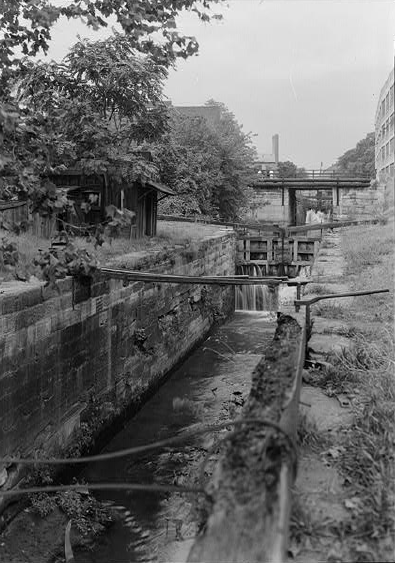What `Watergate’ meant, before it meant scandal
▻http://www.watergatenotes.net/pages/wbeforescandal.html
▻http://www.openstreetmap.org/way/234731579#map=15/38.8988/-77.0669
I had joined the Army the year before — Regular Army, thank you — and was strolling along the tow path of the old Chesapeake and Ohio Canal one Saturday afternoon. It’s a lovely old canal almost lost to the ages half a century ago when local road planners wanted to pave it over and make it a freeway.
Had they done so, they would have wiped out nearly two centuries worth of American history. In 1754, George Washington had envisioned the C&O Canal as a way to link the Chesapeake Bay to the Midwest. The plan was to build a canal from Georgetown on the Potomac River to Pittsburgh on the Ohio River, and on to the heartland via the Mississippi.
The canal would begin just about where Rock Creek empties into the Potomac River, with a canal and locks system paralleling the Potomac River valley. President John Quincy Adams broke ground for the canal in 1828. Builders got as far as Cumberland, Md., 184.5 miles upstream.
It was profitable for a time, but the Baltimore and Ohio railroad, roughly paralleling the canal, ultimately doomed it. Floods took their toll as well, though the railroad continued operating parts of the C&O canal until 1924. The government bought it in 1938, and by the early 1950s had hatched the parkway plan.
Then Supreme Court Justice William O. Douglas, an outdoorsman and historian, went to work. He recruited a party of editorial writers from The Washington Post, which had backed the plan to pave over the canal, and led them on a hike along the entire length of the C&O canal. By the end of the trip the writers had changed their minds, and eventually Congress preserved it as a National Historical Park.
Without that designation, the canal would have disappeared, and so might the little-known area around the canal’s Milepost 0. When we first saw it that afternoon in 1969, it was little more than an old jumble of stones and timbers. But it was, we later learned, the water gate — the last lock, where water coming downstream along the C&O canal could empty into the Potomac. It was the place where canal boats could move on and off the Potomac River. With the water gate closed and the channel filling with water, they could begin the long process of locking up through the C&O.
When a new complex with a hotel, condominiums, offices, restaurants and shops was built just across Rock Creek Parkway, it took its name from that old water gate — and became the Watergate.


